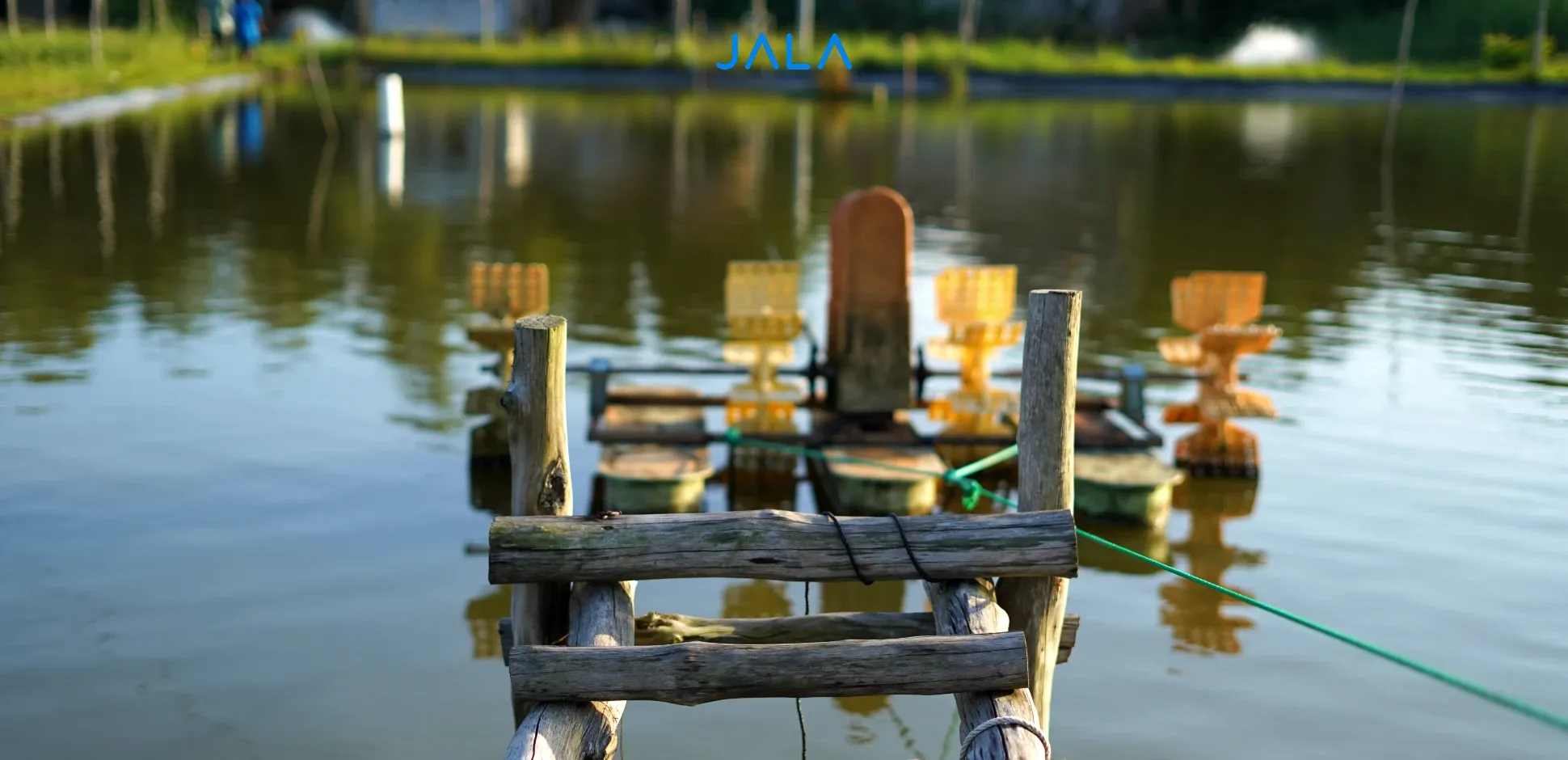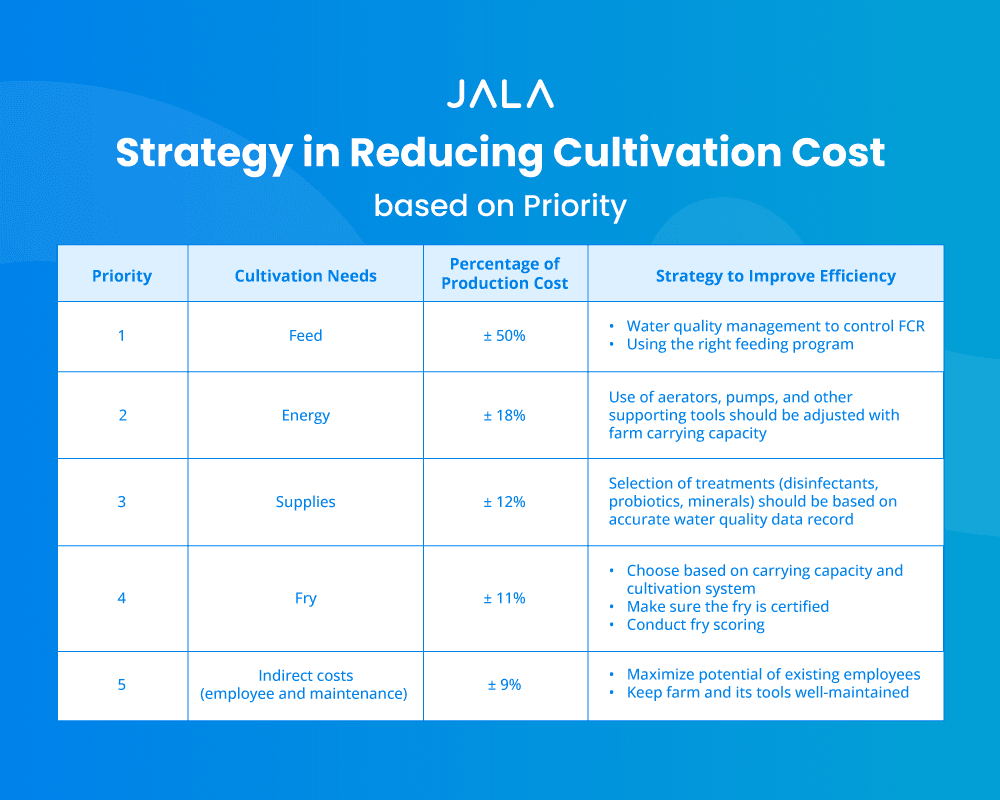
The shrimp industry condition can be considered uncertain, considering the shrimp price dynamics that are not in the favor of farmers and the lurking threat of shrimp diseases. In the midst of this, vannamei shrimp cultivation cost is one of the crucial factors farmers should pay attention to in order to maximize profit.
Cultivation cost refers to the costs that need to be incurred throughout the production process, or, in this case, the cultivation process. Reducing these costs helps farmers get the opportunity to gain higher profits.
What are the tips in reducing vannamei shrimp cultivation costs for more optimal profits? Learn the tips in this article.
Aspects of Shrimp Cultivation Cost
Cultivation costs are divided into fixed and variable costs.
1. Fixed cost
Fixed cost refers to expenses with a constant value from cycle to cycle. In shrimp cultivation, this includes land rent, asset depreciation, and employee wages.
2. Variable cost
Variable cost is all the expenses that change or can be adjusted from cycle to cycle. This includes feed costs, agricultural production facilities, and energy (electricity and fuel), and indirect costs such as maintenance costs.
Strategy in Reducing Shrimp Cultivation Cost
Steps to reduce shrimp farming costs can be taken during the planning, or pre-production production, and post-production phase of the farming process. Here are strategies that can be implemented based on the stages of shrimp farming:
1. Reducing cost during the planning phase
During the planning stage, farmers should carefully determine cultivation targets, such as cultivation duration. Determining duration and production levels will affect production costs.
Moreover, feed cost always remains the biggest component in variable or operational costs, contributing to 60% of total operational costs. Thus, choose the feed type and feed program wisely with cost considerations in mind.
Shrimp farmers should also consider the level of farming intensification by reflecting on the land capacity and costs. Moreover, excessive stocking density also increases the risks faced. The solution is to reduce the stocking density, as lower stocking density helps reduce the need for feed and treatments, thereby reducing cultivation costs.
Read more: 6 Important Notes for Traditional Farms
Not only that, pond size as well as farmer and technician experience also positively impacts financial efficiency in the shrimp farm business. Employees with adequate knowledge and experience in production play an important role in reducing production risks.
2. Reducing cost during the cultivation phase
Reducing production costs without impacting cultivation quality can be done in several ways. Comprehensive management when it comes to feed is crucial, consisting of choosing high-quality feed, efficient feeding, and health maintenance of shrimp, which altogether will increase feed efficiency and result in better economic profitability from the harvested shrimp. Implementing good feed management hugely contributes to efficient production costs.
Aside from feed, the next aspect is energy. Energy costs increase when running cultivations, as much electricity is required. Aeration should be constantly running, and this requirement increases together with stocking density. The use of high-quality aerators with high energy efficiency can reduce production costs without compromising with the supply of sufficient oxygen for shrimp.
3. Reducing cost during the post-production phase
After harvest, evaluations should be carried out to see whether there were less necessary treatments, suboptimal feed management, and other aspects that can be improved in the next cycle. The goal is to reduce cultivation costs without compromising on yield.
The table below summarizes various aspects of cultivation costs by priority due to the proportion of cost incurred. Below is also listed the strategies to reduce each aspect to improve profitability.

Conclusion
The cost of vannamei shrimp cultivation can be divided into fixed and variable costs. To reduce farming costs and increase profitability, farmers can consider the level of intensification, stocking density, and pond size. Additionally, cultivation needs should be prioritized based on the percentage of costs incurred, in the following order:
- Feed
- Energy
- Supplies
- Fry
- Indirect costs
Are you involved in the shrimp industry and want to learn more about strategies in reducing shrimp farming costs? Find more information by downloading the Shrimp Outlook 2024 e-book and gain in-depth insights into the shrimp industry!





